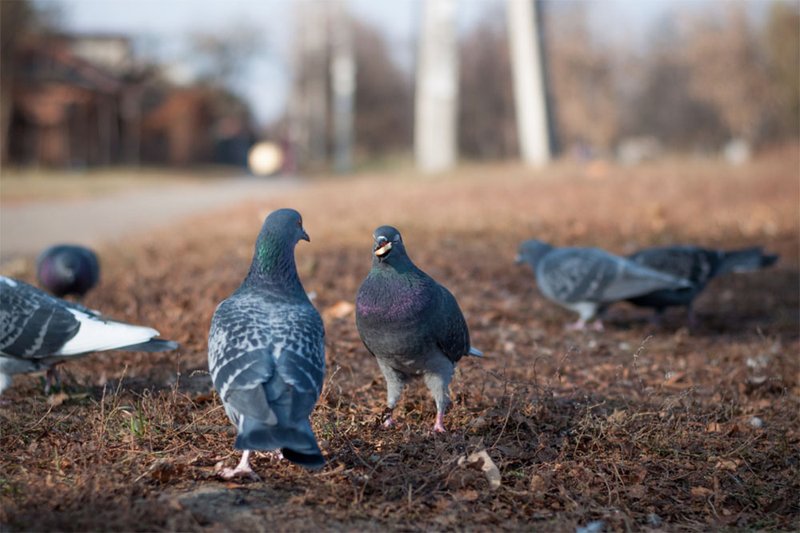
Pigeons have been around for a long time, and their ability to thrive in various environments makes them a unique study in urban wildlife. Unlike many birds that are picky about their diets, pigeons are quite versatile. Whether they’re in a bustling city or a quiet countryside, they’re always on the hunt for their next meal. In this article, we’ll dive into what pigeons eat and how they find their food, showcasing their impressive skill set.
The Diet of Pigeons
Pigeons are classified as granivores, which means they primarily eat seeds. However, their diet is broader than that. They are known to consume a variety of foods, including:
- Seeds and Grains: This includes corn, wheat, barley, and other grains.
- Fruits: Berries and small fruits are also on the menu, especially when seeds are harder to find.
- Vegetable Matter: Green leaves, sprouts, and even some roots can be appealing to pigeons.
- Human Food: In urban areas, they often scavenge leftovers from people’s meals, like bread and fries.
Here’s the thing: pigeons are quite opportunistic eaters. They’ve adapted well to their environments, taking advantage of whatever food sources are available. You might even see them foraging in parks, parking lots, and streets, pecking at anything they can find. This adaptability is key to their survival in diverse habitats.
How Pigeons Hunt for Food
Pigeons don’t really “hunt” in the traditional sense like a predator stalking prey. Instead, they forage—a more casual and opportunistic approach. They rely heavily on their keen vision and social behavior. When they spot food, they quickly gather around, often in groups. The camaraderie among them helps in finding food more efficiently.
When foraging, pigeons use a few specific techniques:
- Visual Scanning: Pigeons have excellent eyesight, which allows them to spot food from a distance. Their eyes can even see ultraviolet light, which helps them identify ripe fruits.
- Ground Pecking: Once they find a promising spot, they use their beaks to peck at the ground, searching for seeds or scraps.
- Social Learning: Young pigeons often learn from older, more experienced birds. If they see another pigeon enjoying a particular food, they’ll likely give it a try themselves.
This adaptability not only ensures they find enough to eat but also helps them thrive in changing environments. Honestly, it’s a beautiful example of how wildlife can adjust to urban living.
The Importance of Water
Water is another essential part of a pigeon’s diet. Pigeons need to drink regularly to stay hydrated, especially when foraging on dry seeds. They typically drink by dipping their beaks into water and sucking it up, as they lack a specialized tongue to lap it up like some other birds.
You might see them hanging around fountains or puddles if you’re in a city. This behavior is crucial because maintaining hydration helps them digest their food properly and regulate their body temperature. Without enough water, even the most resourceful forager can struggle.
Seasonal Changes in Diet
The diet of pigeons can change with the seasons. In spring and summer, they often have access to fresh fruits and seeds from plants that bloom during warm weather. During fall and winter, they tend to rely more on stored grains and whatever scraps they can find.
You might notice them flocking to farmers’ fields, where they can feast on leftover crops. In winter, they can be seen hunting for seeds in snow-covered areas, relying on their memory to remember where they found tasty morsels before.
This seasonal adaptability is a strong survival tactic for pigeons. In harsh climates where food sources dwindle, their ability to change their diet helps them endure the tough months.
The Role of Pigeons in Ecosystems
Pigeons may seem like just another bird, but they play an important role in their ecosystems. As omnivores, they help in seed dispersal. When they eat fruits and grains, they can inadvertently spread these seeds through their droppings. This process helps plants grow in new areas, contributing to biodiversity.
In urban settings, pigeons also contribute to the food chain. They serve as a food source for predators like hawks and falcons. In this way, the humble pigeon is quite significant in maintaining ecological balance, whether in a city park or a natural habitat.
Common Misconceptions About Pigeons
There are a few common myths about pigeons that deserve clarification. One is that they are dirty or disease-ridden. While it’s true that pigeons, like any other urban animals, can carry disease, they are generally no more hazardous than other birds. Proper hygiene, such as washing your hands after handling food, can prevent any potential health risks.
Another misconception is that pigeons only eat bread. While many people enjoy feeding pigeons bread, it isn’t ideal for their health. Bread lacks the nutrients they need, and too much of it can lead to malnutrition. By understanding their diet, you can help pigeons thrive—by offering seeds or grains instead.
Pigeons are more than just park birds; they’re fascinating creatures with unique eating habits and foraging techniques. Their diet primarily consists of seeds and grains, but they are flexible eaters willing to adapt to their surroundings. Their ability to forage effectively allows them to thrive in both urban and rural environments.
By appreciating how pigeons hunt and what they eat, we can better understand the delicate balance of our ecosystems. They play a vital role not just in our cities but in nature as a whole. So, next time you see a pigeon, take a moment to think about the complex life it leads and the essential role it plays in the world around us.

